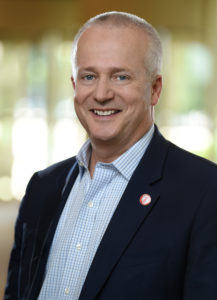I’ve always been invested in lived narratives of others. Whether through a PhotoVoice project of patients with hypertension in Baltimore or people I meet in passing, I’ve never taken the presentation of a person or their behaviors at face value. As in my chosen field of inquiry—studying mechanisms underlying racial/ethnic disparities—each person I encounter presents a series of new questions providing revelation to some truth at his/her core. It’s this curiosity that has drawn me to qualitative methodologies that place the perspectives of study participants at the center of understanding their health and building sustainable interventions.
During these AHA Scientific Sessions, I’ve met people on buses, at lunch tables, or through formal mentoring sessions, who were unsurprisingly, in some way, just like me. This could be a reflection of certain similarities in personality, passion, or interest that draw individuals to a convention. Conversely, it could be that I immediately found our areas of convergence, because subtly, or even subconsciously, I was seeking it. (After all, we always like people who are like us and I like liking people—a blessing or a curse depending on who you ask). How might we envision the world to be if we each sought to find something “likeable” about the people meet—in our professional roles or otherwise? How might healthcare transform if every physician assumed they had some experience or value in common with a seemingly “different” person encountered face-to-face in clinic? What might that mean for health equity? Our stories help us to connect.
Our personal stories, as do other truths, will always find their way to the light. We can offer them up courageously, thoughtfully, and readily, or have them seep out through our conversations and actions (often inconveniently). When Dr. Harrington, President of the AHA, stood on stage after Hamilton performers and mentioned his experience as a first-generation college graduate, my heart soared, “me, too!” When he spoke of the loss of his mother, grief gently warmed my face as I was reminded of my own who succumbed to a heart attack just last year. Immediately, I felt seen. It was a connection that, on the surface, our phenotypical differences might’ve masked (see below).


Of the myriad duties that we’re challenged to perform in our roles as clinicians or researchers, “seeing” other people (and being seen), is arguably one of the most important and impactful. That’s not to say we should bare our souls at every turn—that would be unwise. However, we should probably consider not guarding our personal and professional boundaries so aggressively. Authenticity in our human-to-human interactions—with patients, study participants, collaborators, mentors, and mentees—is where we all learn. The sweet spot lies where we can embrace and respect our diversity without discounting our shared human experiences.
The views, opinions and positions expressed within this blog are those of the author(s) alone and do not represent those of the American Heart Association. The accuracy, completeness and validity of any statements made within this article are not guaranteed. We accept no liability for any errors, omissions or representations. The copyright of this content belongs to the author and any liability with regards to infringement of intellectual property rights remains with them. The Early Career Voice blog is not intended to provide medical advice or treatment. Only your healthcare provider can provide that. The American Heart Association recommends that you consult your healthcare provider regarding your personal health matters. If you think you are having a heart attack, stroke or another emergency, please call 911 immediately.